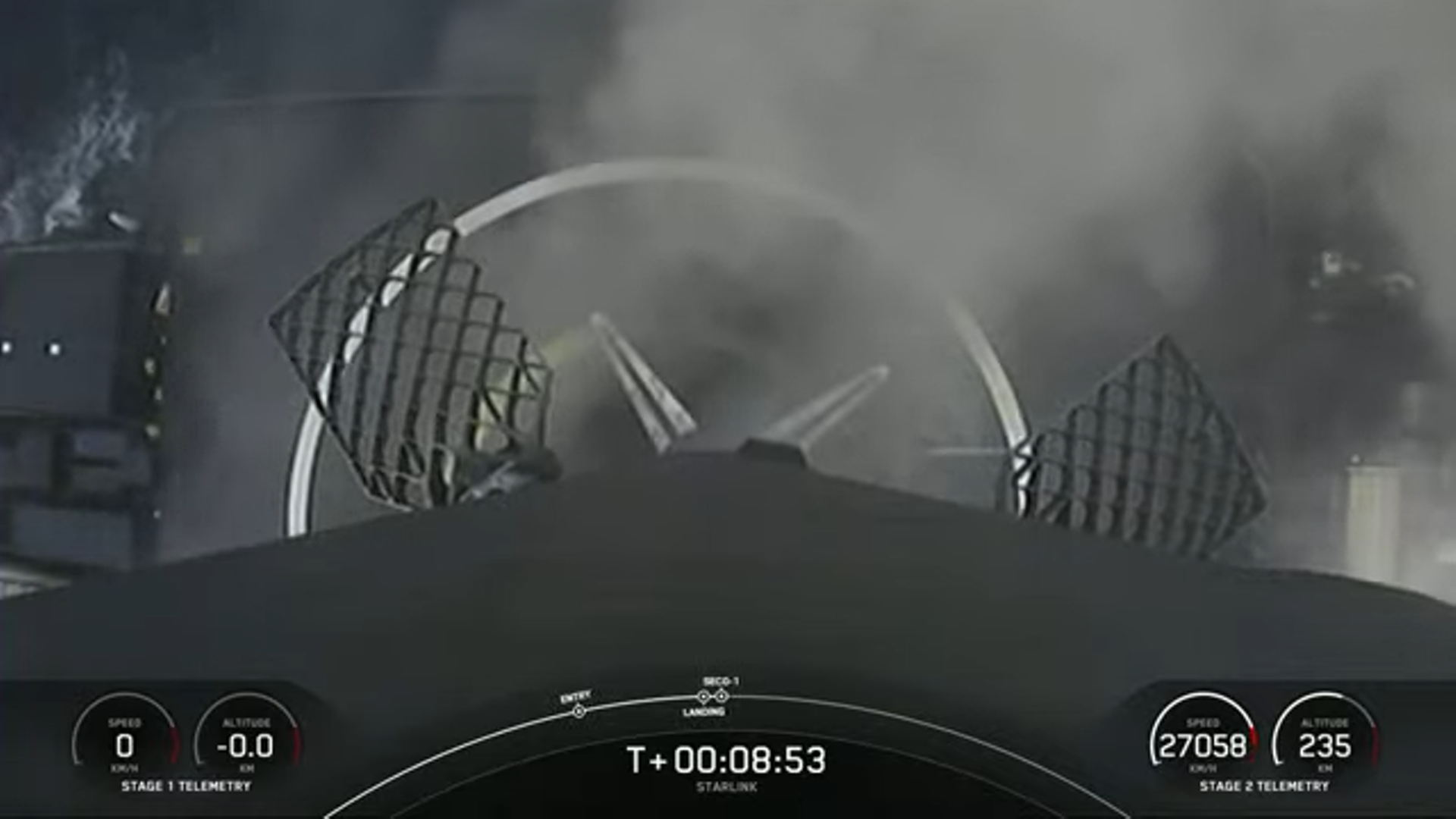
SpaceX has wrapped up an impressive triple-header weekend of launches, flying three seasoned Falcon 9 boosters from the West and East Coasts of the United States, within a record-setting span of less than 34 hours. Life-leader B1058—a rocket which entered service and made history back in May 2020, when it lifted Dragon Endeavour and NASA astronauts Doug Hurley and Bob Behnken on the first leg of their 64-day Demo-2 mission to the International Space Station (ISS)—rose from Pad 39A at the Kennedy Space Center (KSC) in Florida at 4:32 p.m. EST Saturday, becoming the first Falcon 9 to log a 15th launch.
And as the dust settled from SpaceX’s fifth mission inside the first half of December, the Hawthorne, Calif.-headquartered organization has now completed 59 flights in 2022, almost doubling its previous personal-best of 31 launches accomplished at the end of 2021. Two more Falcon 9s are tentatively booked to fly before the New Year’s Eve bell tolls—one from Vandenberg Space Force Base, Calif., carrying the EROS-C3 multispectral imaging spy satellite for Israel’s Ministry of Defence, and a second from Cape Canaveral Space Force Station, Fla., laden with a batch of Starlink low-orbiting internet communications satellites—which could push SpaceX for the first time over the magical number of 60 launches in a single calendar year.
Thus far, 2022 has been profoundly impressive, with 59 launches accomplished between January and today, using only 17 boosters, one of which has flown seven times. Twelve flights have been staged out of Vandenberg, doubling SpaceX’s previous annual record of six missions, accomplished back in 2018.
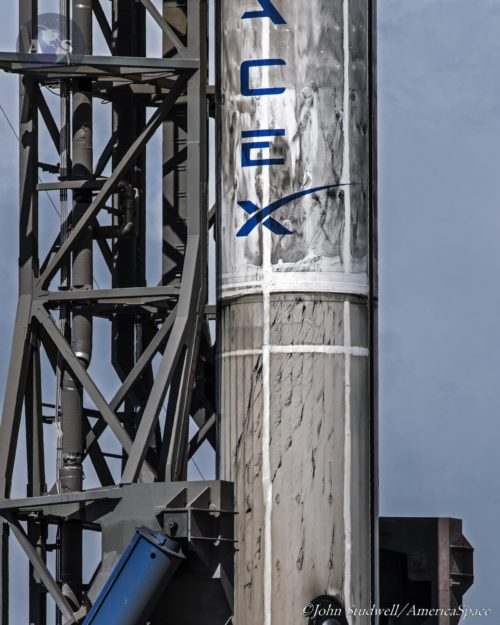
And just last month, after a three-year-plus hiatus, the triple-barreled Falcon Heavy returned to active operational service, lofting the highly secretive USSF-44 payload for the U.S. Space Force. For the first time in 2022, Falcon 9 cores have logged record-setting 12th, 13th, 14th and—with Saturday’s flight—15th launches.
Turnaround times between missions by individual boosters have narrowed from 27 to just 21 days, whilst intervals between flights have narrowed from 15 hours between a pair of launches last December to only six hours between a pair of launches in early October. And in April, SpaceX scored its first-ever six-launch month, an accomplishment it went on to repeat in July, August and October.
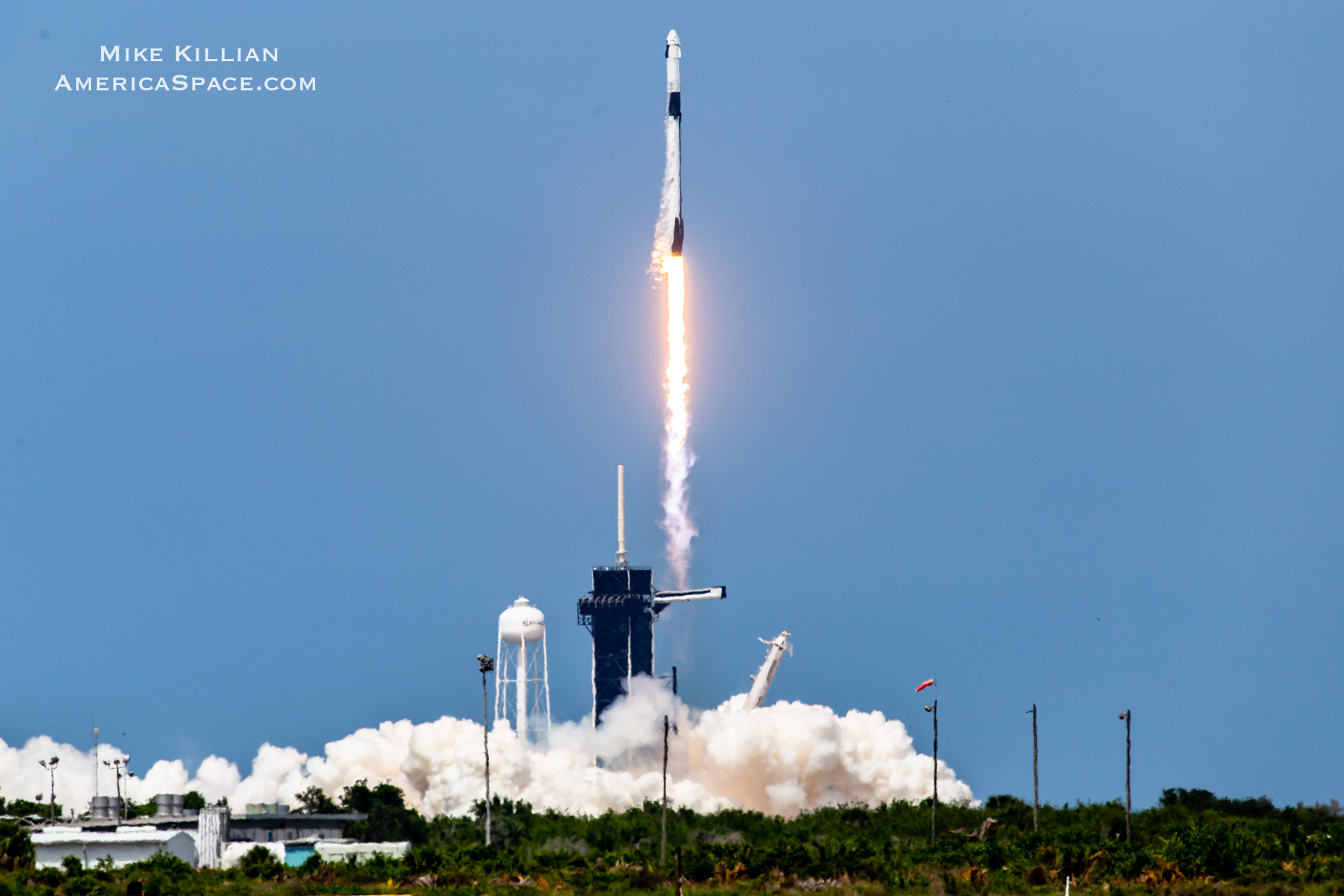
A pair of aging boosters departed the fleet last month, as life-leaders B1051 and B1049 were intentionally expended, a necessity linked to the high-energy requirements of their primary payloads. So too was the core stage of the most recent Falcon Heavy. But in terms of booster reusability, 2022 has so far seen 47 landings on the decks of SpaceX’s fleet of Autonomous Spaceport Drone Ships (ASDS) in the Atlantic and Pacific Oceans and a further 11 on solid ground at either the Cape or Vandenberg.
Returning to the fore for Saturday’s launch was B1058, which first flew on 30 May 2020 to deliver “Bob and Doug” on the first flight of U.S. astronauts aboard a U.S. spacecraft, atop a U.S. rocket, and from U.S. soil, since the end of the Space Shuttle Program almost nine years previously. She went on to fly 13 more times through September 2022, delivering 471 Starlink internet communications satellites, along with the ISS-bound CRS-21 Cargo Dragon, the multi-payload Transporter-1 and Transporter-3 rideshares and South Korea’s ANASIS-II military communications satellite.
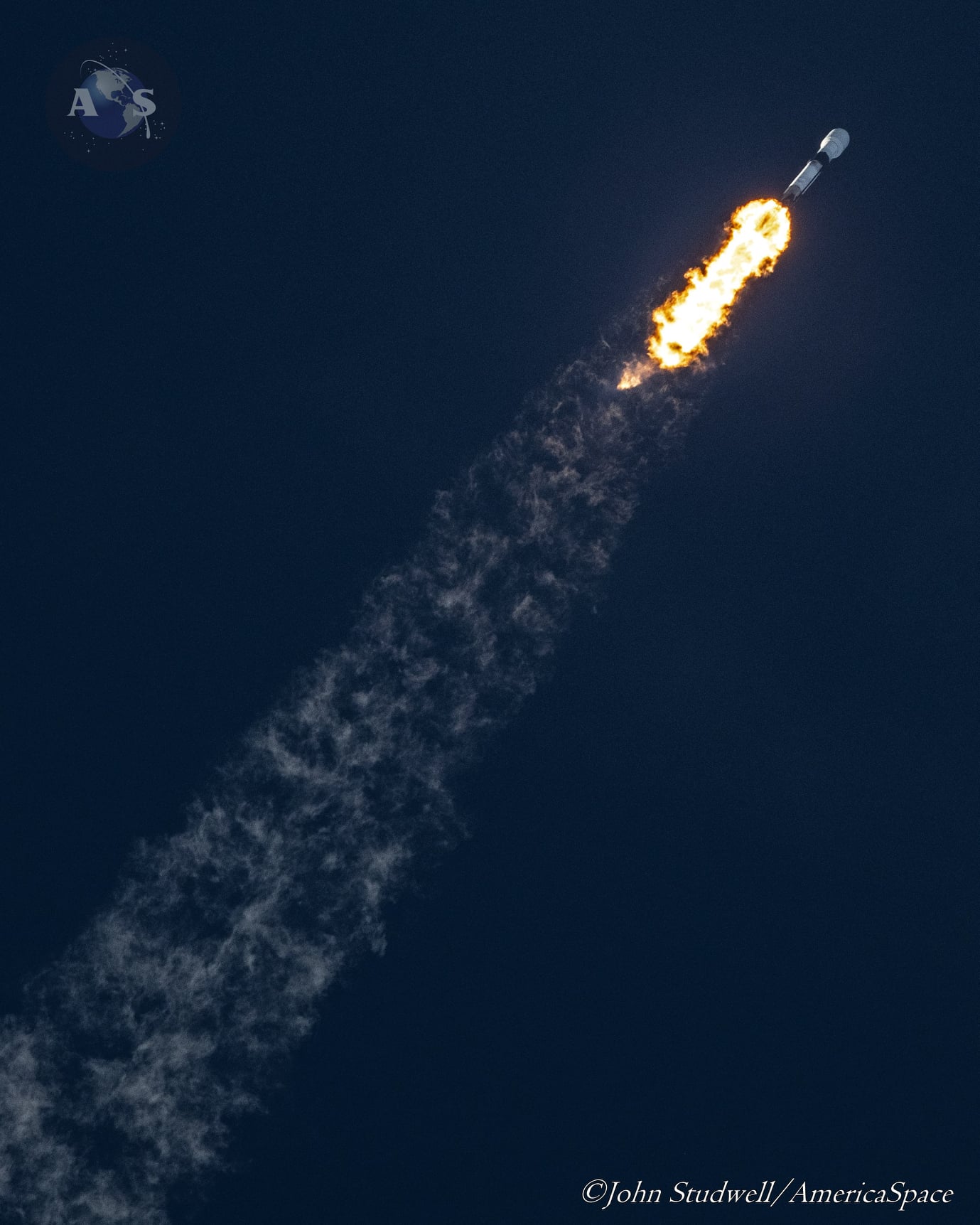
And with her two Transporter missions featuring a total of 248 payloads between them, with her 15th launch on Saturday B1058 has now deployed in excess of 700 large and small spacecraft during the course of her ongoing career. Along the way, she established a new empirical record—now broken—of only 51 days between a pair of launches by the same orbital-class booster.
Notably, her Transporter-1 mission in January 2021 orbited the largest number of separate payloads (143) ever lifted to orbit by a single U.S. orbital rocket. And in 2022, she became the first Falcon 9 in the fleet to fly a 14th and a 15th time.
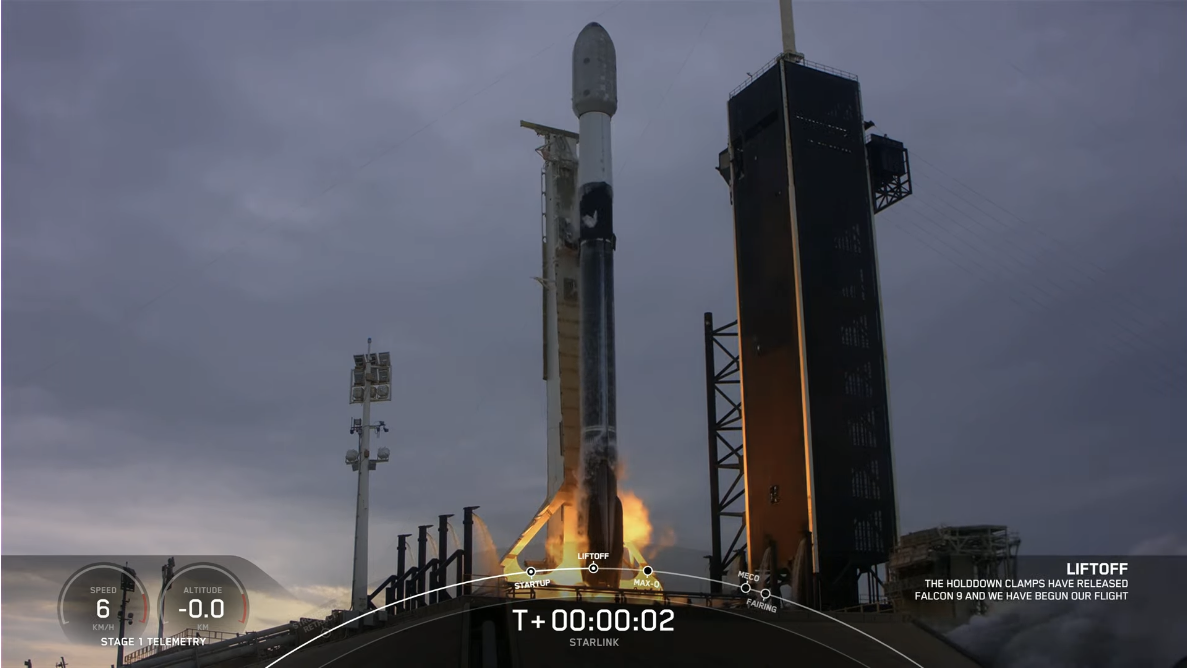
Supporting Saturday’s mission was the ASDS, “Just Read the Instructions”, which put to sea out of Port Canaveral last week. Original hopes of launching B1058 less than a half-hour after Friday night’s launch of two O3b mPOWER broadband satellites came to nought and she found herself realigned for a backup launch opportunity and an instantaneous T-0 at 4:32 p.m. EST Saturday.
That was a pity, for weather conditions on Friday proved decidedly more favorable (at over 90 percent) than Saturday (at 60 percent). “Moisture will begin to increase,” noted the 45th Weather Squadron at Patrick Space Force Base, “as a mid-level disturbance moves in from the west.”
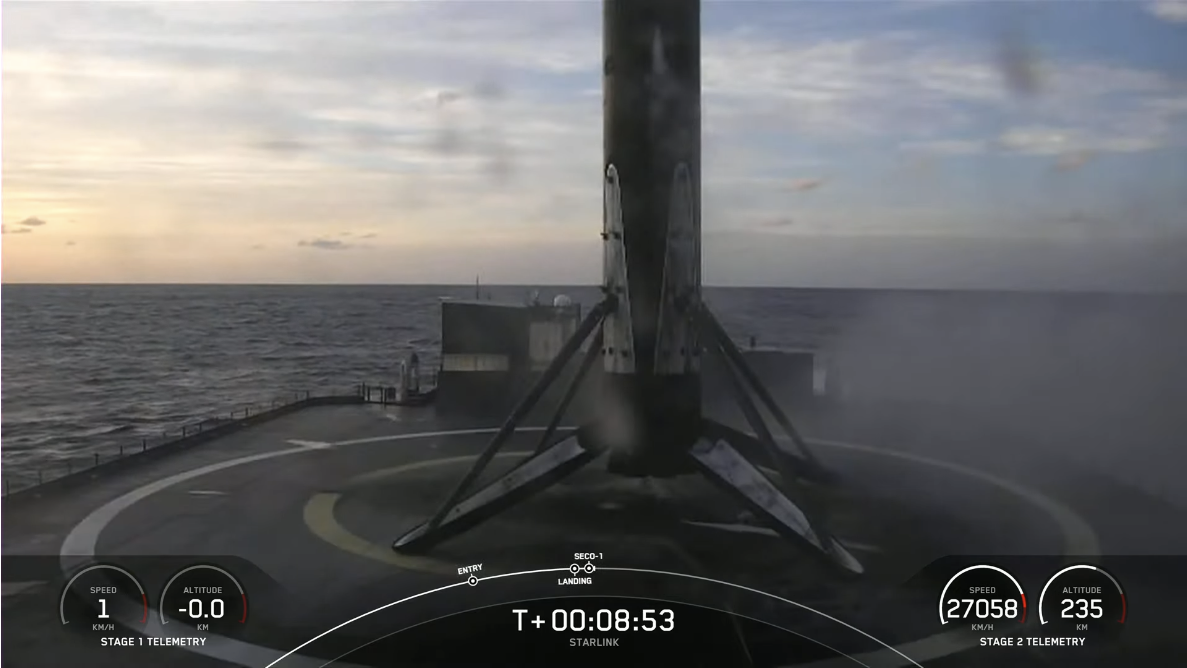
And that, in turn, was expected to see an increase in cloud cover over the Space Coast, with showers moving in on Saturday evening. “While the launch window is likely earlier than when the bulk of the precipitation will arrive,” added the 45th, playing devil’s advocate, “mid- and upper-level cloud cover out ahead of the system will begin to stream in from the west.” All told, this painted an iffy weather picture for Saturday.
Looking blackened and scorched after 14 prior launches, B1058 soared away from Pad 39A at 4:32 p.m. EST Saturday, setting another record of less than 34 hours between three Falcon 9 missions. In doing so, it soundly surpassed SpaceX’s earlier achievement of 36 hours between three launches, set back in June.
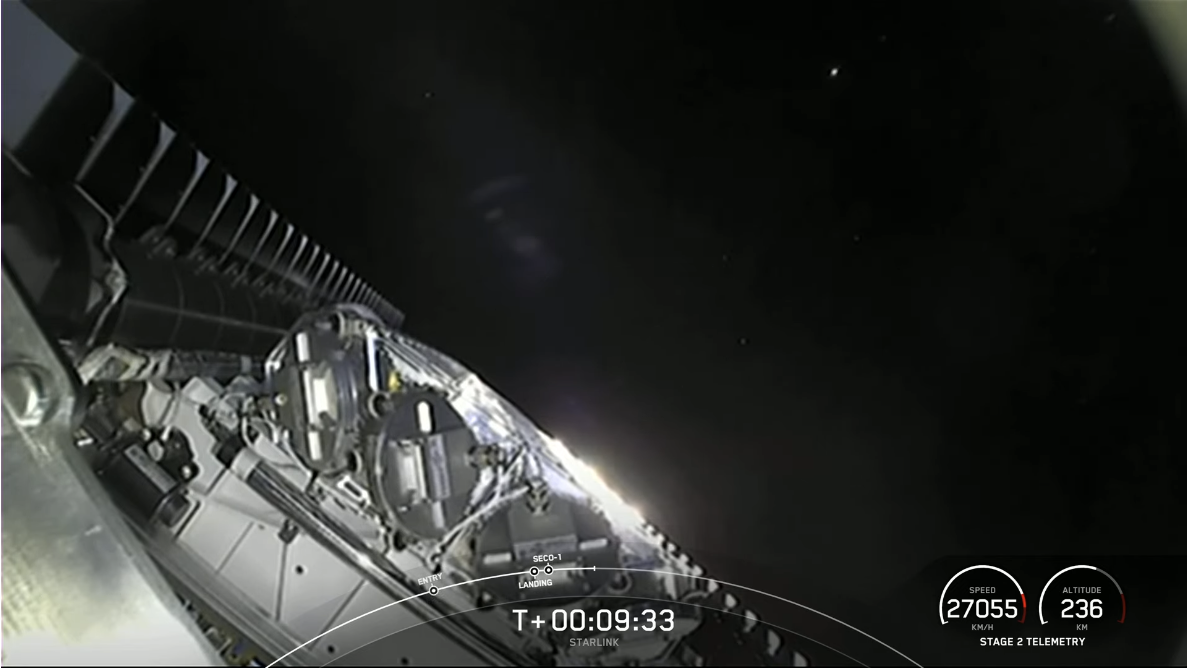
A little over two minutes into her 15th flight, she separated from the rest of the Falcon 9 stack and, guided by an intricate ballet of Merlin 1D+ engines burns and deployable hypersonic grid-fins, returned to a smooth touchdown on JRTI. Meanwhile, the Merlin 1D+ Vacuum engine of the rocket’s second stage executed a six-minute burn to deliver the 54 Starlink internet communications to orbit, with deployment occurring at just over 15 minutes into tonight’s mission.
Starlink’s progress as an internet provider on the world stage has advanced in leaps and bounds in 2022, notably with emergency provision granted to Ukraine earlier this year, following Russia’s invasion in late February. Availability was expanded to include Finland last month, bringing to 45 the total number of sovereign nations and worldwide markets spanning North and South America, Europe, Asia and Oceania to have formally signed up to Starlink since the fall of 2020.




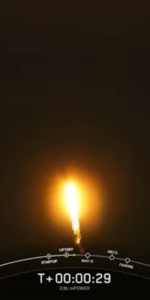

10 Comments
10 Pings & Trackbacks
Pingback:SpaceX Wraps Up Banner 2022, With Year-End Launch of Israeli Spy Satellite - AmericaSpace
Pingback:SpaceX déploie la armoiries 2022, derrière le mappemonde du complice fureteur sabra d’ici la fin de l’période – spyxfamily-es
Pingback:SpaceX’s First 2023 Mission Includes 114-Strong Payload Haul - AmericaSpace
Pingback:SpaceX’s First 2023 Mission Includes 114-Strong Payload Haul - Space News
Pingback:Record-Tying Falcon 9 Kicks Off 2023, Others Wait in Wings - AmericaSpace
Pingback:Record-Tying Falcon 9 Kicks Off 2023, Others Wait in Wings - Space News
Pingback:SpaceX Launches 200th Falcon 9, Continues Vandenberg Cadence - AmericaSpace
Pingback:SpaceX Launches 200th Falcon 9, Continues Vandenberg Cadence - Space News
Pingback:SpaceX Flies April’s Third Vandenberg Mission, Watches Falcon Heavy Weather - AmericaSpace
Pingback:After Weather Delays, SpaceX Launches Arabsat-7B Geostationary Mission - AmericaSpace